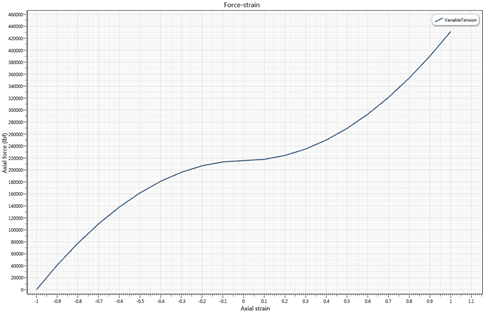The base of the riser, and both ends of the riser/conductor below the mudline, are initially fixed in all degrees of freedom. Vessel boundary conditions are specified in 6 degrees of freedom at the top of the upper flex joint, and restraints for the riser tensioning system are included by specifying boundary conditions at the upper ends of the tensioning lines. The initial position of the vessel reference point and the vessel RAOs are also specified.
A recoil analysis is simulated for a single load case. (In reality it would be usual to look at the disconnect occurring at a number of different times over one wave cycle).
A connected state is first analysed under the action of a specified current and a regular wave, described in the Input Data section below. All of the boundary condition data carries through from the previous runs and no change is required. Since vessel boundary conditions and RAO data have been specified previously, dynamic motions are automatically applied in the dynamic analysis with the onset of wave loading.
A disconnected state is then analysed under the same current and wave loading. The boundary conditions at the base of the riser are removed and all other boundary conditions unchanged. The emergency disconnect is specified to occur at peak vessel heave, after the initial solution has reached steady-stage (the connected state is simulated for approximately five wave periods). The disconnected state is then analysed for a further five wave periods to examine the subsequent riser response.
A total top tension of 1700 kips is applied via the riser tensioning system. The tensioning system is modelled using an assembly of non-linear spring elements. These elements apply a constant tension during normal operation, and also incorporate an increased stiffness as the system approaches maximum or minimum stroke-out. The nonlinear relationship between axial force and strain is shown in the figure below.

Axial Force-Strain Relationship for Tension Line
Each of the eight tensioning lines also include damper elements. These dampers help to damp the motion of the riser after the disconnection has taken place.